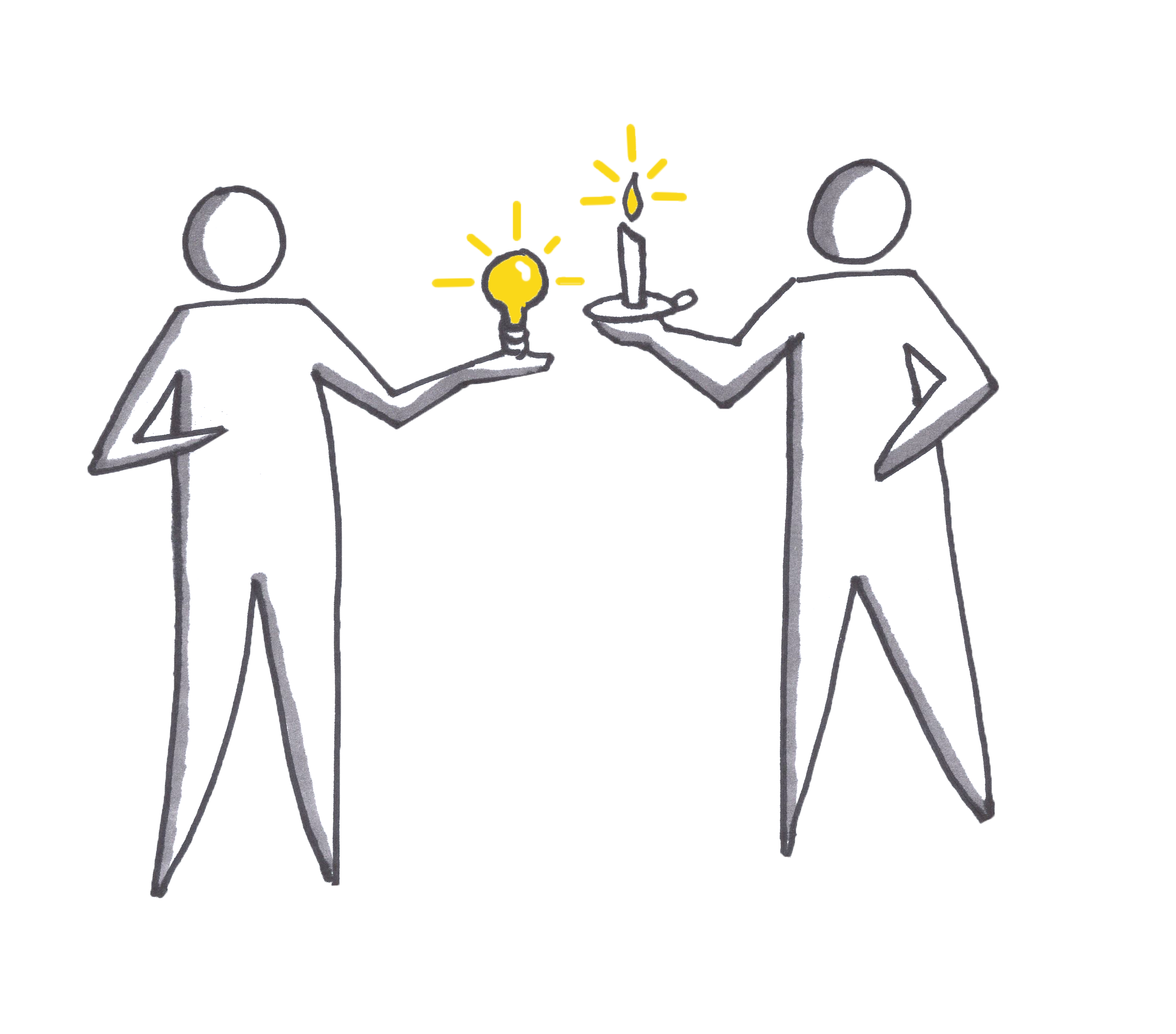Analog/Digital

Analog/Digital
In Brief
This technique helps decouple the risks around physical delivery of a product from a digital component of the product. We can sell a physical version of the product or service, even if our final product will be digital. Selling the physical form first may be easier, riskier, or more complicated. As a technique, this works best for software and information-based or data-based products that historically have had a physical component. Alternatively, it works well if we want the end product to be decoupled from a computer or smartphone.
Helps Answer
- What is the most usable way to gather or deliver an information-based service/product (assuming the customer won't need or doesn't want desktop or mobile)?
- How does this (analog) process work currently, so that we understand the details of what we're turning into a digital form?
- What are the biggest risks around the physical form of our product?
Tags
- Generative
- Product
- Value proposition
- Key resources
- Costs
Description
Many industries have seen a convergence of their existing products with a digital component. Information or software add extra value to an existing product type. In his Harvard Business Review article, Mark Bonchek says, "Digital business models are a bit of a misnomer. It’s not digital technology that defines them; it’s their ability to create exponential value. The music and video industries, for example, weren’t redefined by converting analog to digital formats. Just ask Sony about Minidisc players and Netflix about their DVD business." Founders who want to de-risk assumptions around using a particular delivery vehicle for a product or service will be well-served with this technique.
While it can be used in different areas, here are a few examples of when/where it is best applied:
- Internet of Things (IoT): Design and sell the physical object first, before adding the distributed software (e.g., monitoring).
- Enterprise software: Design or map out the existing process in great depth using paper or other analog formats, and ideally streamline it as much as possible before creating a software version of it.
- Users without computers: Design a paper-based version (or an event) of an information product before selling it in a digital format.
The benefits of taking this approach are:
- Greater flexibility before committing to a large digital product-development project, especially in the context of software.
- The ability to get user or customer feedback based on tactile responses and observing how they actually interact with a physical product.
- Understanding the design criteria and economics of a physical form first, before trying to make the product digital.
This is a common pattern in enterprise lean startups, particularly with bigger companies having a lot of legacy processes.
Note: This is not the same as Randy Komisar's analog/antilog thought experiment for formulating a value proposition or identifying a problem. The goal here is to gather actual user feedback, based on something physical that approximates the final form of the product.
Time Commitment and Resources
Can vary widely. It depends on how long both the physical and digital forms of the product will take to build, and what exactly you are trying to test.
How to
- Confirm that the current "riskiest assumption" lies in Value Proposition, Key Resources, or Cost Structure areas.
- Formulate a hypothesis that implies the existence of a physical version of the product in order to conduct testing.
- Recruit users/customers.
- Validate your hypothesis.
Interpreting Results
Digital is not good for its own sake. Make sure that you are adding useful features and benefits as you add to the product's complexity.
Potential Biases
Over-engineering/gold-plating: Sometimes a good physical product feature will solve the problem better than fancy software and engineering.
Over-focusing on technology: If the tech is proven or low risk, test the business model first (especially customer needs).
Field Tips
- A minimum viable product is not always a smaller/cheaper version of your final product. - @sgblank
- Got a tip? Add a tweetable quote by emailing us: [email protected]
Case Studies
- While selling a digital information product, the experiment team gathered early versions of this data “by hand,” then produced a printed report for test customers. This printed report provided real value and was used to gather feedback. Eventually, the team created a digital version of this report.
- Artivest had to deal with analog paperwork before they could deliver a digital version of its FinTech platform for individuals and IFAs. There was both an operational component and a regulatory one to the analog paperwork.
- Flowserve offers "sensor-enabled valves along with as-a-service valve-status monitoring"
- Wagamama (a fast food Asian fusion restaurant chain) initially took orders like in a traditional restaurant, noting orders via a number system on paper placemats, then introduced a wireless handheld PoS that waiters used to take orders, communicate with the kitchen, and manage operations data.
- Drones in precision farming
- Got a case study? Add a link by emailing us: [email protected]
Tools
- Got a tool to recommend? Add a link by emailing us: [email protected]
References
- Harvard Business Review: How to Create an Exponential Mindset
- What Drones and Crop Dusters Can Teach About Minimum Viable Product
- Got a reference? Add a link by emailing us: [email protected]
